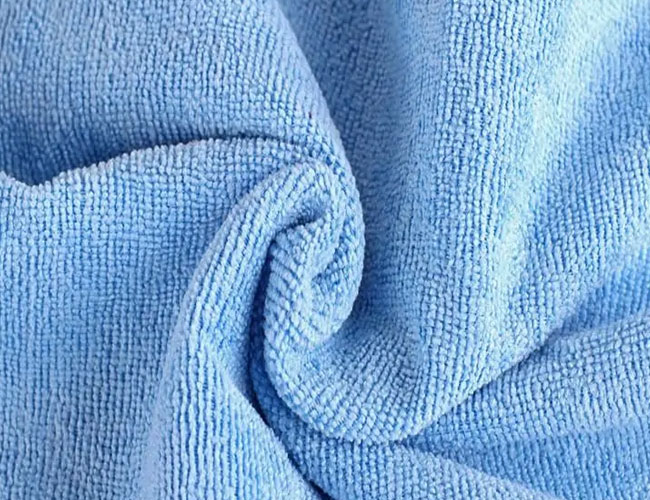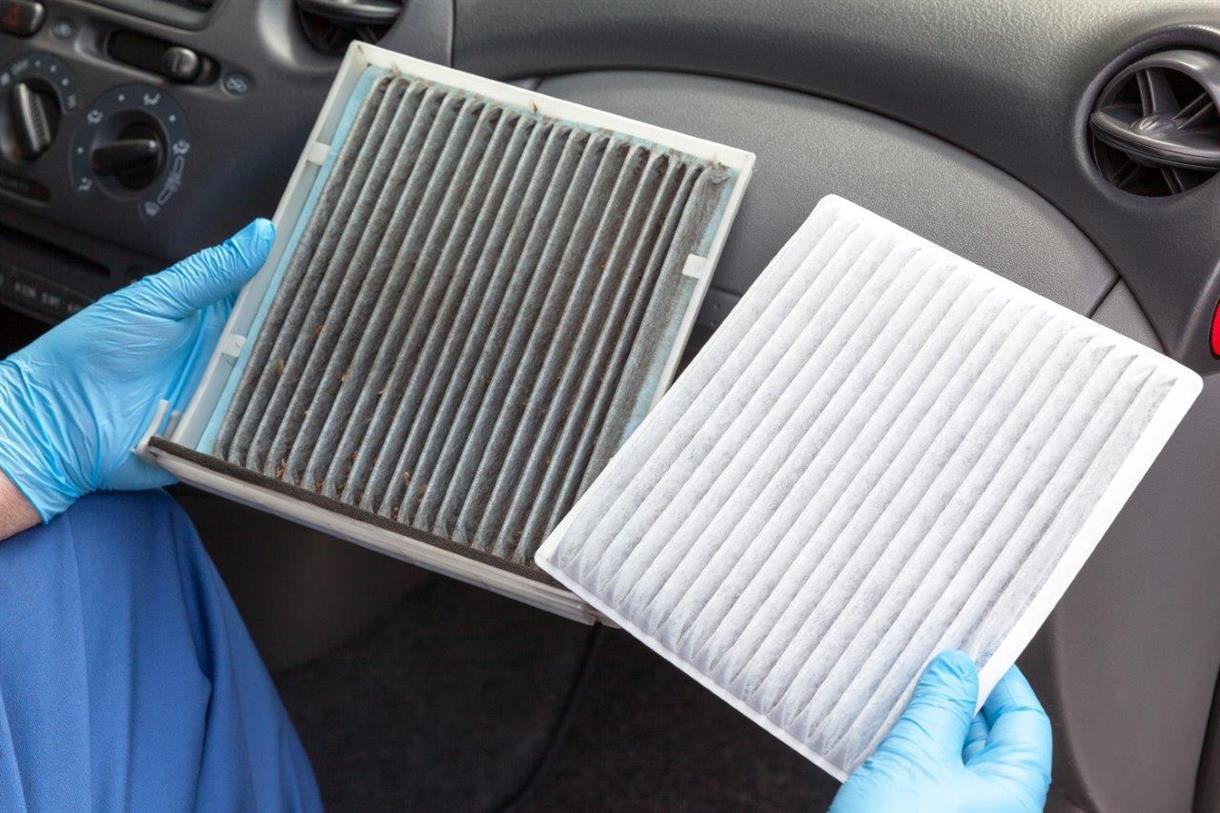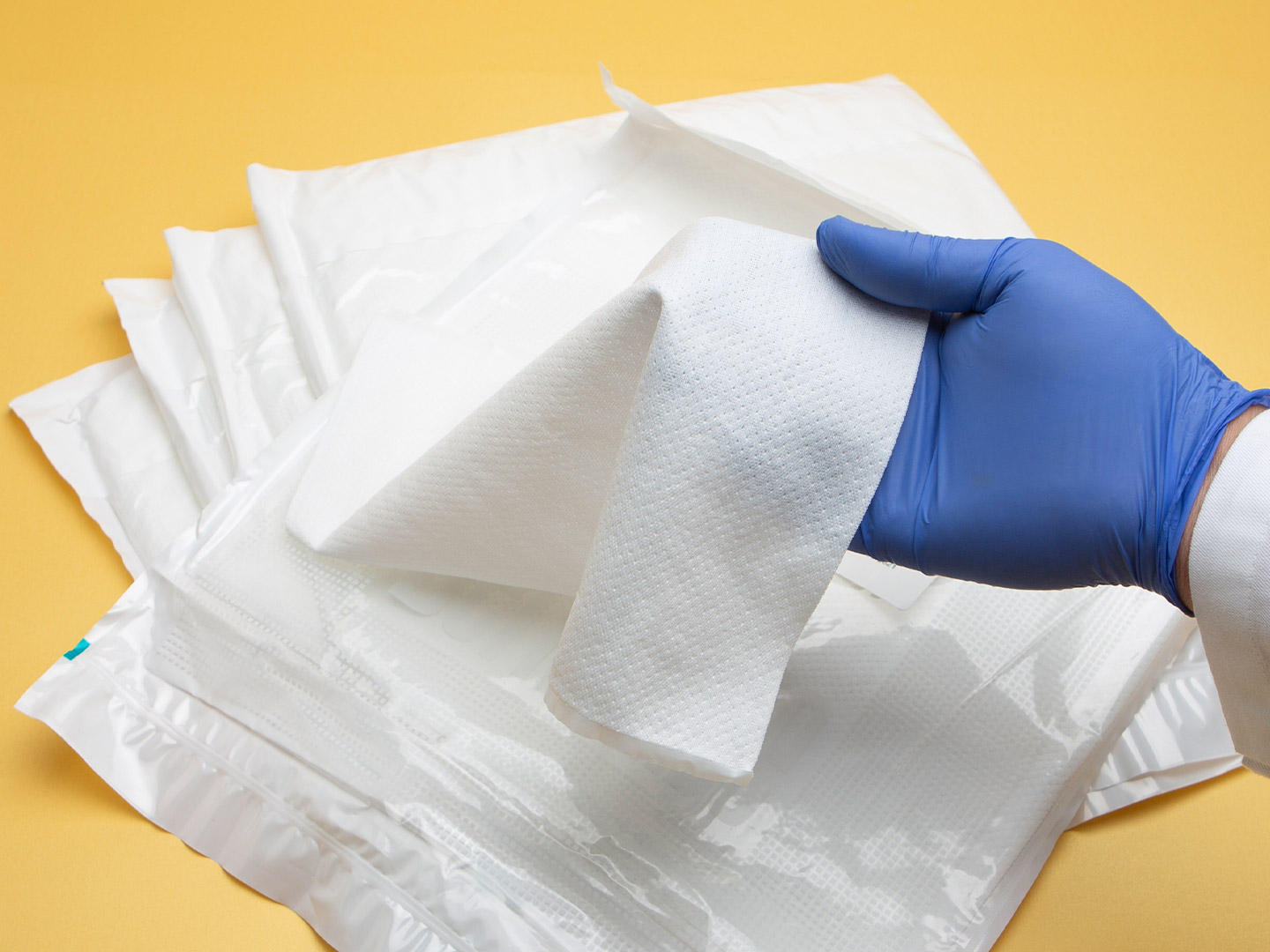
Mesh, to be exact, is called warp knitted fabric, which is woven by a warp knitting machine. Mesh size and mesh depth can be adjusted according to the needs of the mesh woven. Such as the standard diamond, triangle, hexagon, and column, square, square, and so on. The diversification of mesh shapes is a major feature of warp knitted fabrics. They are involved in a wide range of outdoor equipment and have a large number of applications.
Among them, Nylon mesh fabric refers to a mesh made of nylon. Nylon is the common name for polyamide fiber, which can be made into long or short fibers. Nylon mesh is often used to make the upper part of some special shoes, or the lining of clothes and bags because of its good ductility and breathability.
Usually, nylon mesh is used in various professional sports shoes such as running shoes, tennis shoes, and so on. Wearing nylon mesh shoes is stylish and comfortable. And the mesh ventilation holes allow moisture to escape from the foot at any time, thus keeping the inside of the shoe dry.
Nylon fabric is a polymer fabric. It consists of long chains of carbon-based molecules called monomers. There are many types of nylon. But most are derived from polyamide monomers derived from crude oil (also known as petroleum).
In most cases, a monomer called hexamethylene diamine is sometimes referred to as diamino acid. It is used in the production of nylon. This monomer is extracted from crude oil, and the remaining components of this oil are sometimes used for other purposes. But they may also be discarded.
To create nylon fabrics, diamines are forced to react with adipic acid. This type of polymer, referred to as PA 6,6, was the first polymer used in nylon fabrics. pa 6,6 is a substance called nylon salt. And this crystalline substance is then heated to form a molten substance.
This substance is then extruded through a spinneret. It is a device that looks like a showerhead with dozens of small holes. Immediately after extrusion through the spinneret, hardening of nylon fibers. And the resulting fibers are then ready to be loaded onto the spool.
These fibers are then stretched to increase their strength and elasticity and then wound onto another spool in a process called "stretching. This process aligns the polymer molecules into a parallel structure, and after the stretching process is complete, the resulting fibers can be spun into garments or other forms of fiber.
In some cases, nylon can be spun into fabrics on its own, but it is often combined with other fabrics to make blended textiles. They are then dyed to produce the desired color of the final product.
Properties of Nylon Include:
Soft hand feel
Lightweight
Temperature resistance
High tensile strength
Acid resistance
Alkali resistance
Abrasion resistance
Antibacterial (when combined with silver ion fiber)
Corrosion resistance
High elasticity and flexibility
Dust resistant
Hydrophilic
Easy to cut, dye, and clean
Benefits Include:
Nylon mesh fabrics are used where versatility, durability, and strength are required. The inherent chemical properties of this polyamide allow its fibers to resist abrasion from bending or stretching. Nylon has a smoother, softer feel than polyester, making it ideal for applications that need comfort or aesthetics. Nylon has greater elastic properties than polyester, and nylon is also hydrophilic. It means it absorbs moisture.
Nylon mesh fabric is often used to make the upper part of some special shoes or the lining of clothes and bags. Because of its good stretchability and breathability.
Usually, nylon mesh fabric is used in various professional sports shoes, such as running shoes, tennis shoes, and so on. Wearing nylon mesh shoes is stylish and comfortable. And the mesh vents allow moisture to escape from the foot at any time, thus keeping the inside of the shoe dry.
Because of the design of the mesh ventilation holes. It makes the dust particles in the air and some visible sand enter the mesh lining. This brings inconvenience to the cleaning of the nylon mesh shoes. If the particles are into the larger sand and gravel. You can invert the shoe before cleaning and tap the bottom with the brush handle to make the sand and gravel fall out. And then clean, it is not easy to destroy the nylon mesh. If it is just some dust, you can invert the shoe and immerse it in water, and then go clean it after half an hour according to the regular cleaning method.
Nylon mesh is used for clothing, socks, underwear, shirts, sweatshirts, and other clothing. As well as bedding, bags, packaging bags, umbrellas, rope, and other products. Because of its good elasticity, dyeability, antibacterial, and flame retardant properties. Nylon mesh is also used in carpets, curtain fabrics, and various furniture decorative items.
Also, the unique properties of nylon mesh make it particularly suitable for a range of industrial applications, including
Filtration: nylon mesh screens for filters, mops, and squeegees;
Marine: fishing nets, boat covers, and tarpaulins;
Automotive: filters, seat materials, substrates, mesh bags, cargo nets;
Healthcare: privacy curtains, slings, and braces, IV mesh supports;
Recreational equipment: harnesses, sports goals, and seines, shoes, and sportswear;
Aerospace: cargo nets, mesh passenger seat supports, and seat pockets.
| Fabric Name | Also Known As | Fabric Introduction |
|
| Nylon-6 | Polyamide-6 (PA-6) | A translucent or opaque opalescent resin. |
|
| Nylon-66 | Polyamide-66(PA-66) | It is poly(hexanediylhexanediamine). |
|
| Nylon-1010 | Polyamide-1010(PA-1010) | Nylon - 1010 is made from castor oil as the base material, and is a unique variety in China. Its biggest feature is highly ductile, can be drawn to 3 to 4 times the original length, has high tensile strength, has excellent impact, has low-temperature properties, and is not brittle at -60℃. |
|
| Nylon-610 | Polyamide-610(PA-610) | It is translucent and milky white in color. Its strength is between nylon-6 and nylon-66. It has a small specific gravity, low crystallinity, less influence on water and humidity, good dimensional stability, and can be self-extinguishing. It is used for precision plastic fittings, oil pipelines, containers, ropes, conveyor belts, bearings, gaskets, and insulation materials in electrical and electronics, and instrument cases. |
|
| Nylon-612 | Polyamide-612(PA-612) | Nylon-612 is a tough nylon, with a lower melting point and softer than PA66, its heat resistance is similar to PA6, but with excellent hydrolysis resistance and dimensional stability, and low water absorption. The most important use is to make monofilament bristles for toothbrushes. |
|
| Nylon-612 | Polyamide-612(PA-612) | Nylon-612 is a tough nylon, with a lower melting point and softer than PA66, its heat resistance is similar to PA6, but with excellent hydrolysis resistance and dimensional stability, and low water absorption. The most important use is to make monofilament bristles for toothbrushes. |
|
| Nylon-11 | Polyamide-11(PA-11) | It is a white translucent body. Its outstanding features are low melting temperature and wide processing temperature, low water absorption, good low temperature performance, good flexibility that can be maintained at -40℃~120℃. It is mainly used for automobile oil pipeline, brake system hose, fiber optic cable covering, packaging film, daily necessities, etc. |
|
| Nylon-12 | Polyamide-12(PA-12) | It is like nylon-11, but its density, melting point, and water absorption are lower than that of nylon-11. It has the properties of combined polyamide and polyolefin because it contains a larger amount of toughening agents. Its outstanding features are high decomposition temperature, low water absorption, and excellent low-temperature resistance. It is mainly used for automobile oil pipes, instrument panels, gas pedals, brake hoses, anechoic parts of electronic appliances, and cable sheathing. |
|
| Nylon-46 | Polyamide-46(PA-46) | Its outstanding features are small water absorption, the water absorption rate of 0.17%; good heat resistance (melting point of 308 ℃, glass transition temperature of 126 ℃), its welding temperature up to 290 ℃. It is mainly used in electronics, electrical appliances, information equipment and automobile parts. |
|
| Nylon-6T | Polyamide-6T(PA-6T) | Its outstanding features are high-temperature resistance (melting point of 370℃, glass transition temperature of 180℃, can be used for a long time at 200℃), high strength, dimensional stability, and good resistance to welding. It is mainly used for auto parts, oil pump cover, air filter, heat resistant electrical parts such as wire harness terminal block, fuse, etc. |
|
| Nylon-9T | Polyamide-6T(PA-6T) | Its outstanding features are small water absorption, the water absorption rate of 0.17%; good heat resistance (melting point of 308 ℃, glass transition temperature of 126 ℃), its welding temperature up to 290 ℃. It is mainly used in electronics, electrical appliances, information equipment, and automobile parts. |
|
While nylon and polyester share some common characteristics, they are manufactured differently.
Nylon fabric is formed by extracting carbon-based molecules from formed sources such as petroleum or coal. These are combined by heating to form larger polymer molecules, resulting in polyamides. Polyamides made in this way are known as nylon.
Polyester fabric is one of the most used plastics. It is made by facilitating a chemical reaction between alcohol, petroleum byproducts, and carboxylic acids in a vacuum. This produces a polymer that can be stretched and made into fabric.
Benefits when woven into mesh fabrics include.
Nylon: Nylon mesh fabrics are used where versatility, durability, and strength are required. The inherent chemical properties of this polyamide allow its fibers to resist abrasion from bending or stretching. Nylon has a smoother, softer feel than polyester, making it ideal for applications that need comfort or aesthetics. Both materials are elastic, but nylon has greater elastic properties than polyester. Nylon is also hydrophilic, which means it absorbs moisture.
Polyester: Polyester mesh fabrics are easier to dye because they are hydrophobic - they repel water. As a result, the material absorbs the pigments in the dye while expelling water. This property also means that polyester dries more than nylon, making it ideal for marine environments. Polyester is also more flame retardant than nylon and also has a higher resistance to UV degradation.
Originally developed by DuPont and produced in the United States. Nylon fabrics were produced primarily in the United States until the second half of the 20th century. As the benefits of this fabric became more widely recognized around the world. Other developed countries began to invest in the production of nylon fabrics.
The restructuring of the global economy in the late 1970s and throughout the 1980s caused many international companies to turn to China to establish their production bases. As a result, China began to emerge as a major producer of nylon fabrics. Other regional countries such as India, Pakistan, and Indonesia also started producing the fabrics.
To some extent, nylon fabrics are still produced in the United States. But much of the production of this fabric has shifted overseas. Although contemporary U.S.A manufacturing is recovering. It is unlikely that the production of nylon fabrics will be transferred back to the United States. Over the past few decades, production of this fabric has been declining, and even China is producing less and less of this fabric.
The production of nylon fabrics usually has a negative impact on the environment, and it takes 20 years for nylon fabrics to decompose in nature. While it is possible to manufacture nylon fabrics from other substances, most manufacturers use crude oil as a source of hexamethylene diamine, which is the primary component of most types of nylon fabrics.
The acquisition and use of fuels are known to be harmful to the environment. Drilling, fracking, and other oil extraction methods are harmful to ecosystems around the world, and because oil is not a sustainable resource, the global oil industry needs to continue to expand to meet its production.
The above is all about Nylon Mesh Fabric. To know more about our fabric products, advantages, certificates, and services, welcome to browse more details on our website or contact us. Our Email: [email protected].
All Rights Reserved: https://www.groupgf.com/info-detail/what-is-nylon-fabric
Copyright Notice: This is an original (translated) article from G&F Group Inc., please indicate the source from G&F Group Inc.. If there is any infringement, please contact us first.
 Nonwovens in daily life ----- filtration
Nonwovens in daily life ----- filtration
 Nonwovens in daily life ----- automotive
Nonwovens in daily life ----- automotive
 What is SAP – superabsorbent polymers
What is SAP – superabsorbent polymers
 The Future of Global Nonwoven Wipes to 2029
The Future of Global Nonwoven Wipes to 2029